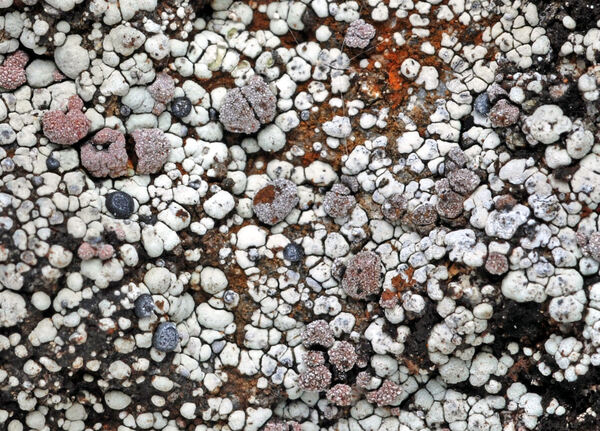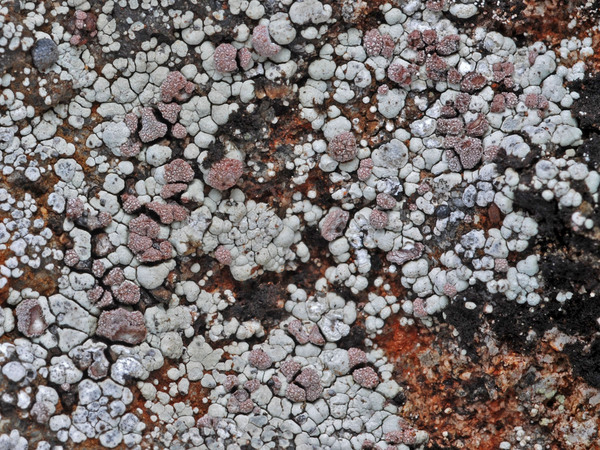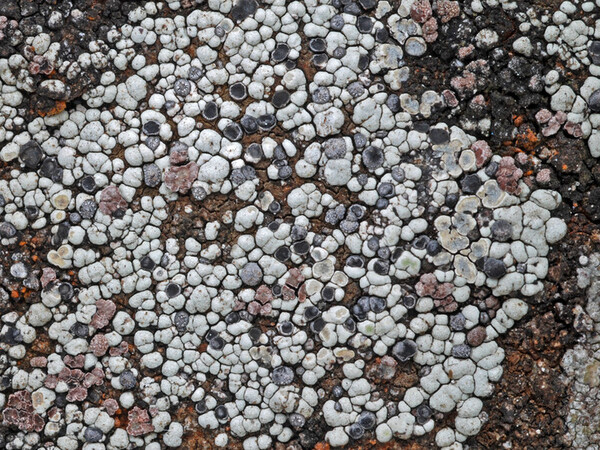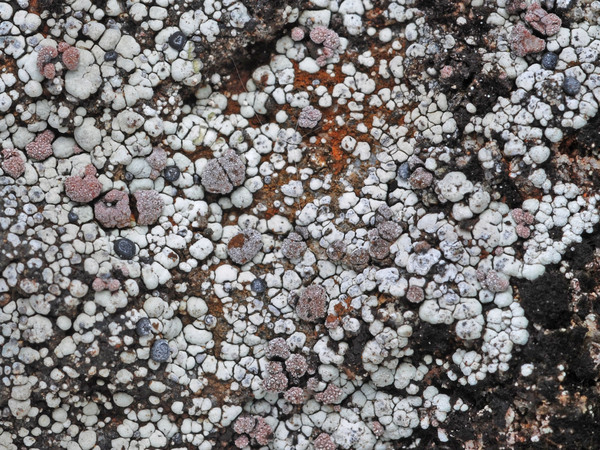Amygdalaria consentiens (Nyl.) Hertel, Brodo & May. Inoue
in Inoue, J. Hattori Bot. Lab., 56: 322, 1984. Basionym: Lecidea consentiens Nyl. - Flora, 49: 371, 1866
Synonyms:
Distribution:
Description: Thallus crustose, episubstratic, continuous to rimose-areolate, usually thick, grey, brownish grey or pinkish brown, sometimes partially rust-coloured, often delimited by a black prothallus. Medulla white, I-. Cephalodia arising mainly between the areoles, flat or rarely slightly convex, almost concolorous with thallus or more intensively pinkish brown or grey, containing Stigonema. Apothecia aspicilioid, entirely immersed in the thallus, (0.3-)0.4-0.9(-1.5) mm across, usually one or two per areole, with a dark brown to black, often umbonate disc, a weakly raised, concolorous to slightly rusty-orange-pruinose proper margin, and a sometimes finally excluded thalline margin. Proper exciple poorly developed, black-brown, 50-70 μm wide laterally, without crystals, of conglutinated, radially arranged hyphae; epithecium brownish, with orange crystals; hymenium colourless, (100-)150-180(-200) μm high, I+ blue; paraphyses coherent, c. 2 μm thick, richly branched and anastomosing, submoniliform in upper part, the apical cells more or less swollen; subhymenium colourless, 45-60 μm high; hypothecium blackish brown, usually thin, bowl-shaped. Asci 8-spored, elongate-clavate, with a thin, outer amyloid layer and a thickened tholus penetrated by a pore, the sides of which stain I/KI+ deep blue, Porpidia-type. Ascospores 1-celled, hyaline, ellipsoid, (21-)25-35(-40) x (9.5-)14-18(-22) μm, when young with a thin perispore. Pycnidia black, immersed. Conidia bacilliform, 6-9 x c. 1 μm. Photobiont chlorococcoid in thallus, cyanobacterial in cephalodia. Spot tests: cortex and medulla K-, C-, KC-, P-, UV-. Chemistry: without lichen substances.Note: a very rare, probably circum-arctic species, peculiar in having sunken apothecia and lacking soralia, growing on siliceous rocks in the Alpine belt. Known from a few stations in the Eastern and Northern Alps (Austria, Germany); to be looked for in the Italian Alps.
Growth form: Crustose
Substrata: rocks
Photobiont: green algae other than Trentepohlia
Reproductive strategy: mainly sexual
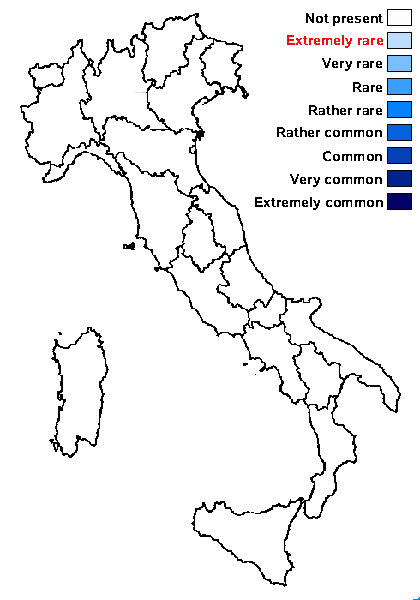
Predictive model
Growth form: Crustose
Substrata: rocks
Photobiont: green algae other than Trentepohlia
Reproductive strategy: mainly sexual

Predictive model
 INDEX FUNGORUM
INDEX FUNGORUM
 GBIF
GBIF
